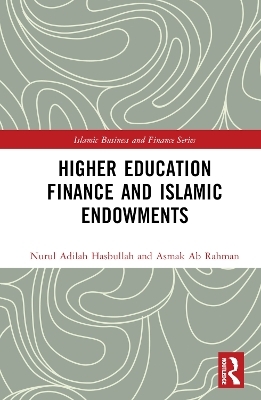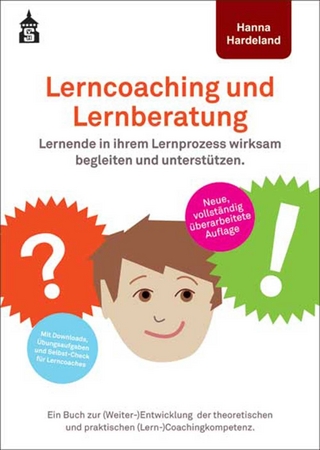
Higher Education Finance and Islamic Endowments
Seiten
2023
Routledge (Verlag)
978-1-032-56527-9 (ISBN)
Routledge (Verlag)
978-1-032-56527-9 (ISBN)
Various instruments have been proposed as a platform for the private sector to channel funding to higher education institutions. This book introduces readers to the issues surrounding the financing of HEIs, especially public universities, which are dependent on government budgets.
Public debt pressures due to the global economic crisis have impacted higher education in several countries, compelling governments to curtail the funding of higher education institutions (HEIs). Various instruments have been proposed as a platform for the private sector to channel funding to HEIs. This book introduces readers to the issues surrounding the financing of HEIs, especially public universities, which are dependent on government budgets.
It discusses the sources of funding for HEIs, focusing on philanthropic instruments through endowment and waqf funds. Since both forms of income are obtained via contributions from third parties, such as alumni, individuals, and business corporations, it is essential that they are managed in such a way to ensure their sustainability and that their benefits can be accessed without interruption. It explains the theory of successful endowment and waqf at HEIs, namely appropriate investment planning, superior investment committees, highly skilled investment managers, alumni networks, diversity of income sources and effective fundraising. These elements have been studied empirically in this book through case studies of several selected Malaysian public universities. The book considers policy implications and offers recommendations of strategies that universities can adopt, such as the appointment of fund managers. No specific guidelines currently exist for appointing fund managers to enable universities to invest in assets such as bonds, equities, and property. Therefore, the book encourages universities to grow the endowment and waqf funds through proper investment strategies executed by professional fund managers.
The book contributes new knowledge to scholars, students and researchers, as well as informing university administrators how to collect, manage, and invest funds from endowment and waqf.
Public debt pressures due to the global economic crisis have impacted higher education in several countries, compelling governments to curtail the funding of higher education institutions (HEIs). Various instruments have been proposed as a platform for the private sector to channel funding to HEIs. This book introduces readers to the issues surrounding the financing of HEIs, especially public universities, which are dependent on government budgets.
It discusses the sources of funding for HEIs, focusing on philanthropic instruments through endowment and waqf funds. Since both forms of income are obtained via contributions from third parties, such as alumni, individuals, and business corporations, it is essential that they are managed in such a way to ensure their sustainability and that their benefits can be accessed without interruption. It explains the theory of successful endowment and waqf at HEIs, namely appropriate investment planning, superior investment committees, highly skilled investment managers, alumni networks, diversity of income sources and effective fundraising. These elements have been studied empirically in this book through case studies of several selected Malaysian public universities. The book considers policy implications and offers recommendations of strategies that universities can adopt, such as the appointment of fund managers. No specific guidelines currently exist for appointing fund managers to enable universities to invest in assets such as bonds, equities, and property. Therefore, the book encourages universities to grow the endowment and waqf funds through proper investment strategies executed by professional fund managers.
The book contributes new knowledge to scholars, students and researchers, as well as informing university administrators how to collect, manage, and invest funds from endowment and waqf.
Nurul Adilah Hasbullah is Senior Lecturer at the Faculty of Economics and Muamalat, Universiti Sains Islam Malaysia, Malaysia. Asmak Ab Rahman is Associate Professor at the Department of Shariah and Economics, Academy of Islamic Studies, Universiti Malaya, Malaysia.
1. Introduction 2. Theory of sources of funding for higher education institutions 3. Theory of endowment and WAQF as sources of funding for higher education institutions 4. Theoretical perspectives on the success of endowment and WAQF in higher education institutions 5. Application of endowment and WAQF at Malaysian public universities 6. Elements of successful implementation of endowment and WAQF at selected Malaysian public universities 7. Conclusion
| Erscheinungsdatum | 09.11.2023 |
|---|---|
| Reihe/Serie | Islamic Business and Finance Series |
| Zusatzinfo | 28 Tables, black and white; 25 Line drawings, black and white; 25 Illustrations, black and white |
| Verlagsort | London |
| Sprache | englisch |
| Maße | 156 x 234 mm |
| Gewicht | 480 g |
| Themenwelt | Sozialwissenschaften ► Pädagogik ► Erwachsenenbildung |
| Sozialwissenschaften ► Soziologie ► Spezielle Soziologien | |
| Wirtschaft ► Betriebswirtschaft / Management ► Finanzierung | |
| Wirtschaft ► Betriebswirtschaft / Management ► Marketing / Vertrieb | |
| ISBN-10 | 1-032-56527-6 / 1032565276 |
| ISBN-13 | 978-1-032-56527-9 / 9781032565279 |
| Zustand | Neuware |
| Informationen gemäß Produktsicherheitsverordnung (GPSR) | |
| Haben Sie eine Frage zum Produkt? |
Mehr entdecken
aus dem Bereich
aus dem Bereich
Lernende in ihrem Lernprozess wirksam begleiten und unterstützen. Ein …
Buch | Softcover (2024)
WBV Media (Verlag)
CHF 27,95


